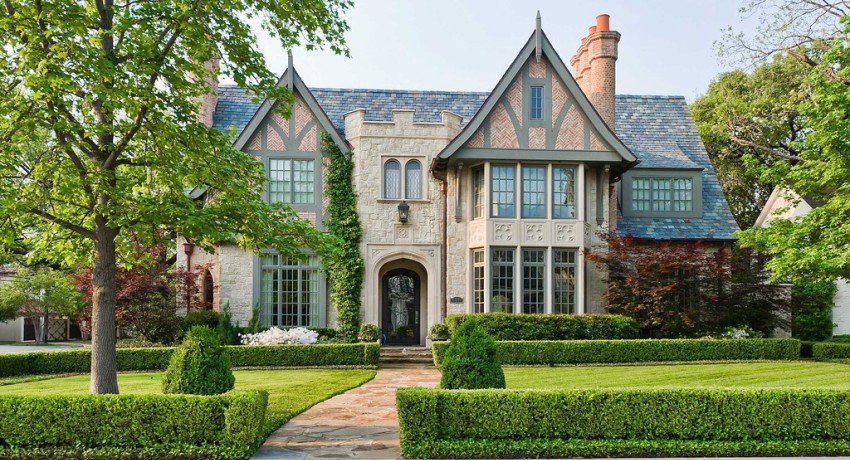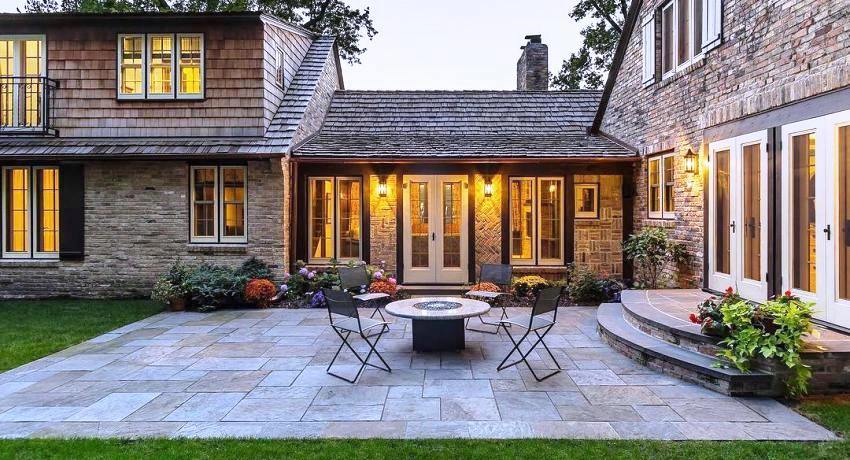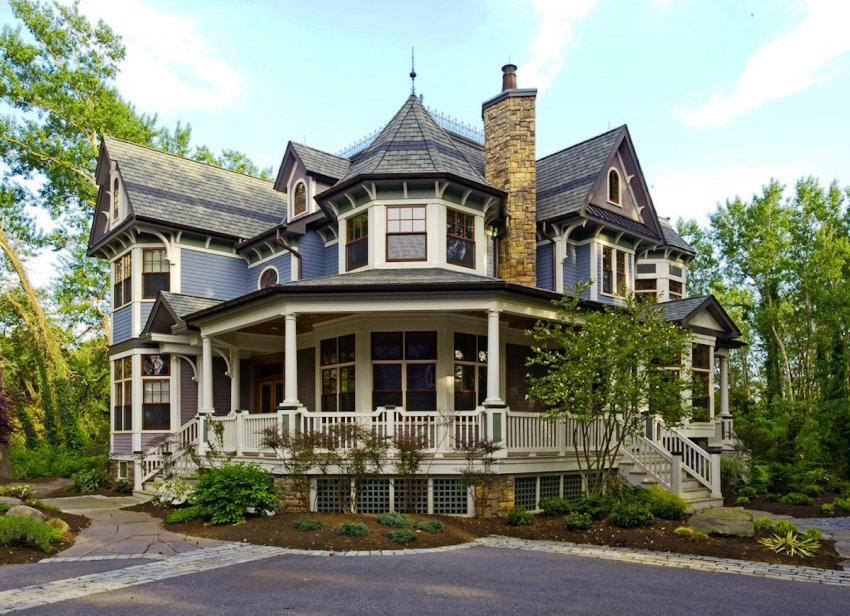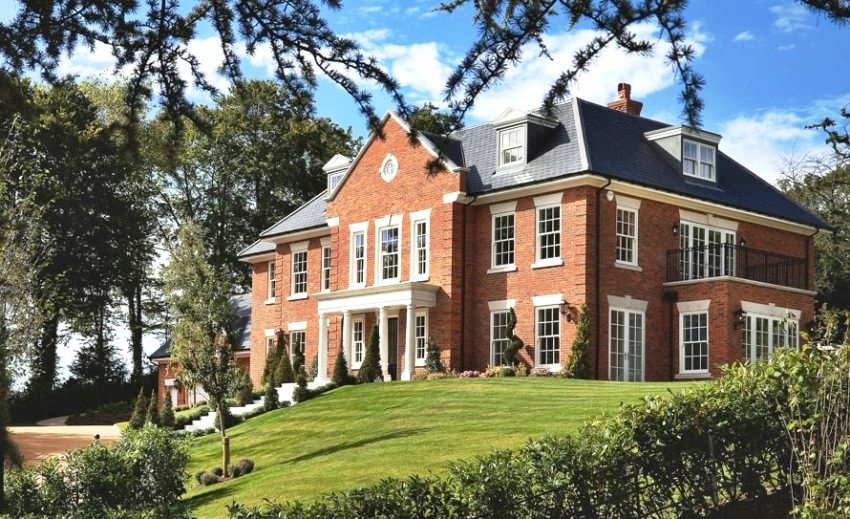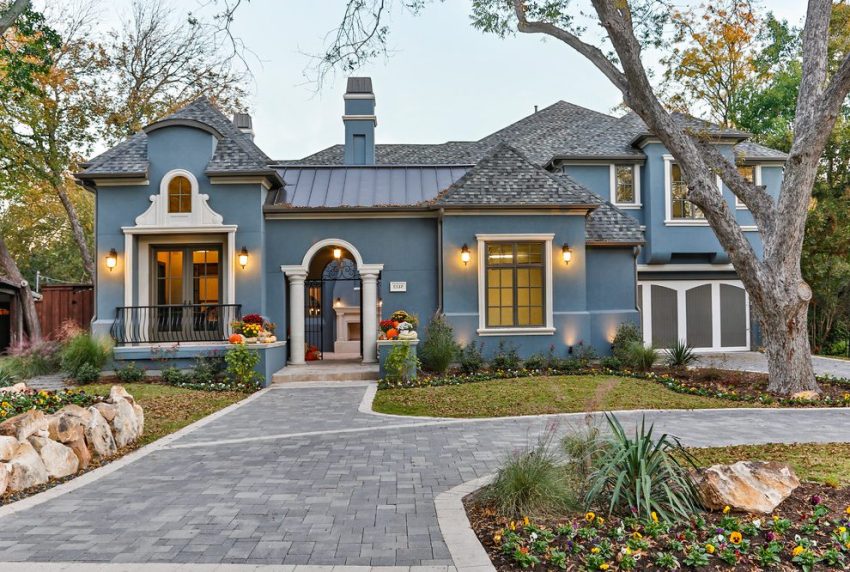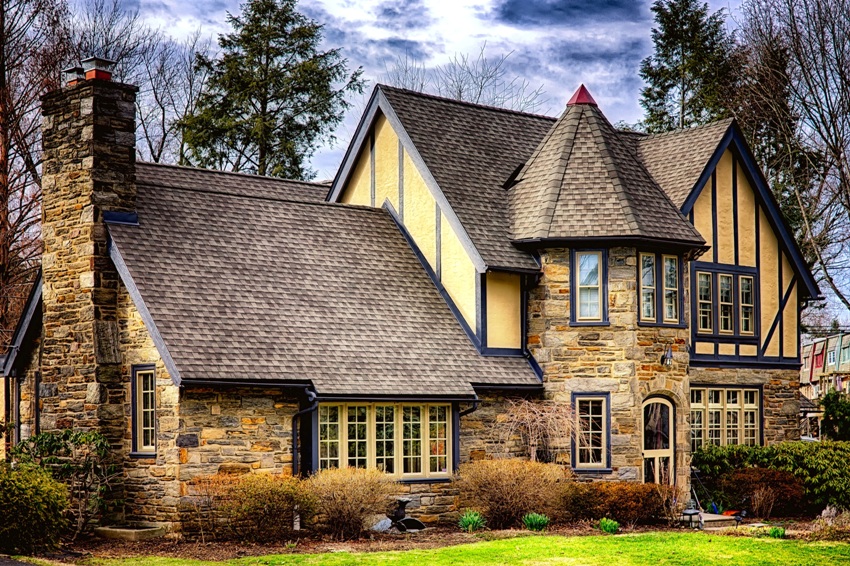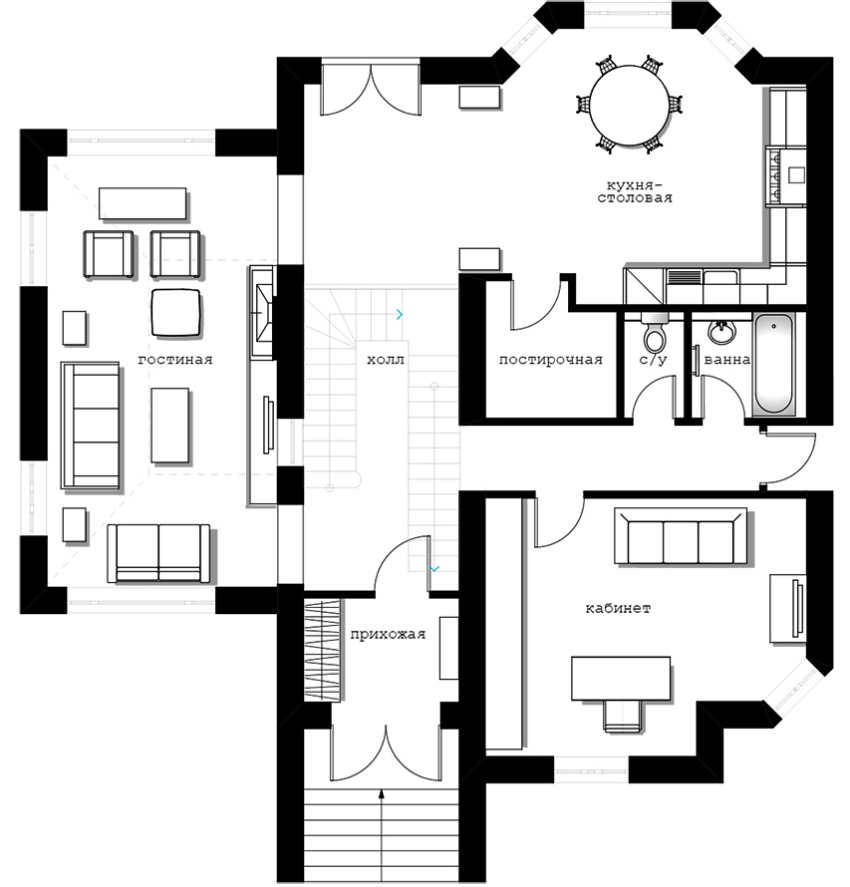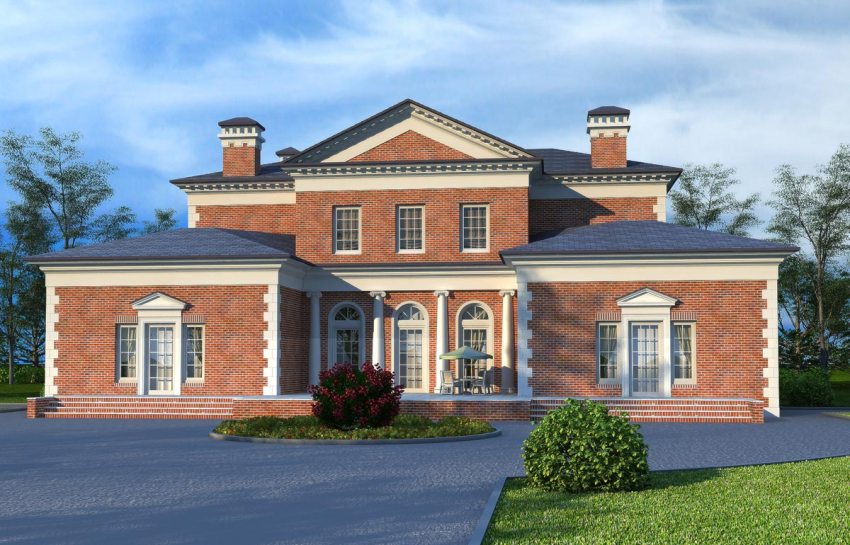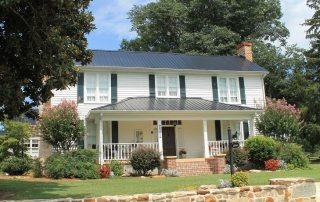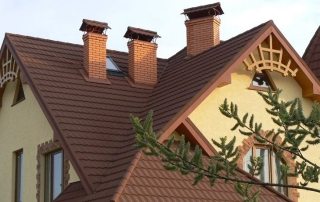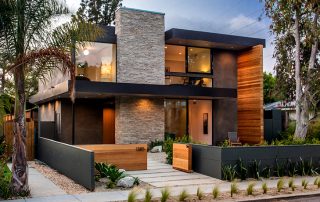The name "English" in relation to architecture is associated with the word "classic". The unity of refinement, restraint, splendor, luxury is the reason for the identification of these two concepts. To acquire not a newfangled housing construction, which will surely lose its aesthetic relevance, but solid housing, not subject to the trends of the times, is the desire of people striving for stability. An English-style house can be a great choice.
Content [Hide]
The main directions of English architecture
The English style, like no other, for its correct and full-fledged perception requires at least a slight excursion into history. This is an architectural epic lasting at least four centuries (the 15th – 18th centuries are the years of official recognition: the formation takes much longer). The era is characterized by the change of ruling dynasties, stormy processes of development of society, industry and, as a result, the active construction of secular buildings.
If we omit the division into early and late periods, the following main varieties of the English style in architecture stand out:
- Tudor;
- Georgian;
- Victorian.
Despite the sequence of appearance of styles, one cannot talk about their continuity, find elements of improvement in later directions, look for common fundamental or unifying features. These are styles that have different architectural traditions.
If you still try to find generalizing definitions without touching on the comparison of shapes, shades, material used, then they will be as follows:
- conservatism;
- strength and solidity;
- massiveness.
English architecture still has many admirers today. There are more and more people who want to buy a house in the European style, namely in the classic English genre, with the rise in the level of well-being.
Tudor era in the English style: projects of brick houses
Many modern country villages are built up with brick houses in the English style. It is the Tudor era that is characterized by the appearance of such houses. Brick was introduced in the 15th century by Dutch emigrants and immediately began to be actively used not only as the main building material, but also as a way to decorate facades.
Typical features of the buildings of the Tudor era are:
- numerous asymmetries in the architecture of buildings;
- steep roofs;
- high pediments;
- half-timbered house;
- chimney, visually representing a separate part of the structure and having a decorative finish made of stone or a special type of brickwork;
- the main windows are rectangular, with small squares of glazing, swing open;
- dormers, often round;
- bright, distinguished by the decoration with large stone or additional decorative brickwork, the design of the central entrance.
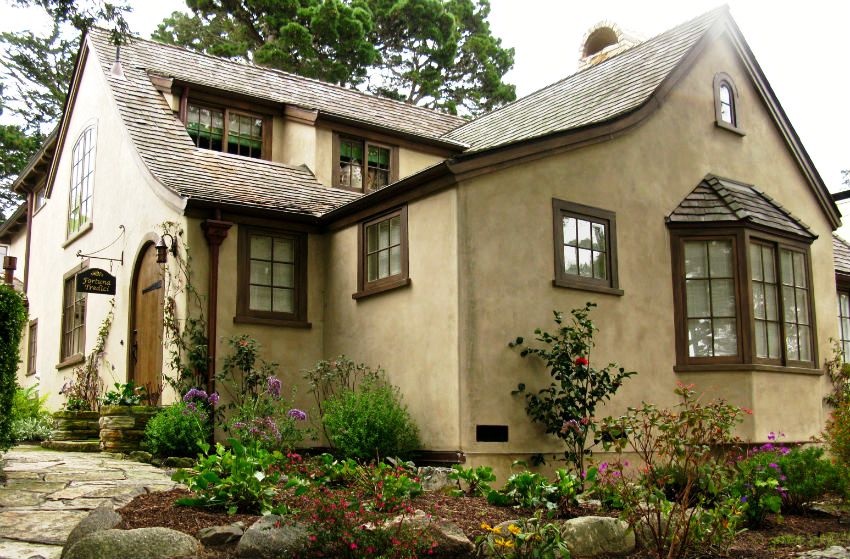
The Tudor era in the English style is characterized by some asymmetry in the architecture of the building
The era of the Tudor rule lasted more than a hundred years. The style has undergone many changes, rather, even additions. If you look at the photos of houses in the English style, which belong to the non-Tudor direction, offered by construction companies, you will notice that the main distinctive elements and characteristic features are also present in modern houses: high roofs (only tiles); chimneys that decorate the facade of the building; obligatory fachwerk (imitation is often used); asymmetry, giving the building originality and mystery.
Useful advice! This style involves the use of natural materials in construction. If preference is still given to metal-plastic windows, it is better to install brown window blocks or imitated under natural wood. White products will introduce a certain pattern, will contribute to a departure from style.
House designs in the English style Georgian era
The Georgian style is both restrained and dignified. Houses look presentable, solid. It is thanks to the above advantages that the Georgian type of construction is in demand. Modern architects have developed many different projects of country houses in this architectural direction.
The main distinguishing features of this style are:
- rectangular shape of the building;
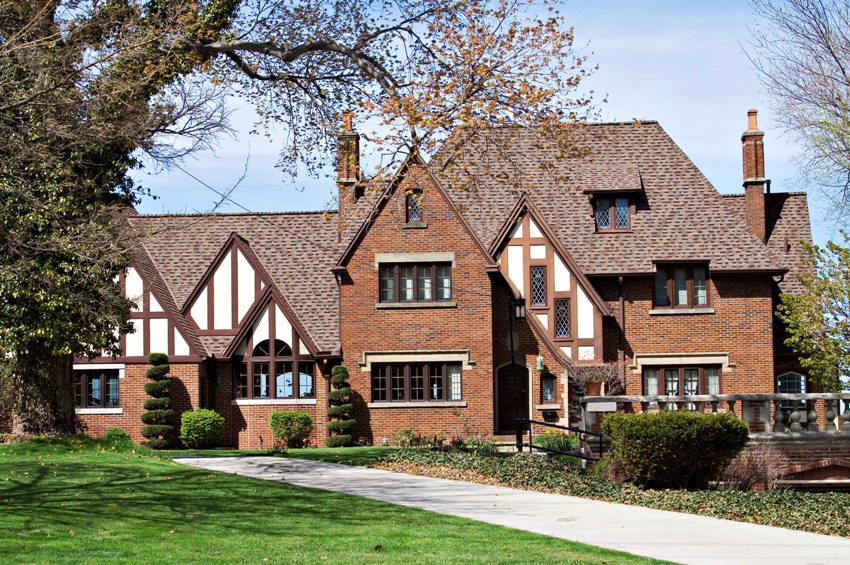
The facades of houses in the English style of the Georgian era are distinguished by a symmetrical arrangement of windows and even chimneys.
- strict symmetry of its various parts;
- brick walls with restrained decor;
- ceiling at the entrance, supported by columns (portico);
- paneled front door with decorative elements;
- a pitched roof that practically does not hang over the building.
The proposed photos of the facades of houses in the English style of the Georgian era clearly demonstrate the paired, symmetrical arrangement of windows and even chimneys. The door is an important part of the interior. The decorated door leaf can be framed on top and on both sides (necessarily symmetrically) by blocks of small windows, which are sometimes opening structures, but more often they are intended only for natural illumination of the corridor. Modern designers quite often replace windows with glass blocks, which adds additional decorative effect.
The facade is decorated with various small stucco elements, arches, pilasters, which are either made of white material or painted white.
White windows and the same decor add elegance and completeness to the building.

The facade of houses in the style of the Georgian era is often decorated with various small stucco elements, arches
The roof of the Georgian buildings is also a symmetrical structure. To follow the rules of style, modern houses are covered with a material of gray shades, similar to the slate used in the 18th century.
Buildings in this direction of the English style are built on a high plinth, which is lined with stone or stands out through plastering and painting.
Architectural features of Victorian houses
"Victorian style" sounds status, pathetic. It took shape against the backdrop of the industrial upsurge in Great Britain. In parallel with the rich houses of the bourgeois, wishing to emphasize their position, there were buildings of representatives of the wealthy middle class. The sizes of the households of the latter were somewhat smaller, but the main traditions were observed. Although it should also be noted that the building materials used were often replaced with cheaper ones.
Looking through photos of English houses built in Victorian style, even with today's typical set of building and finishing materials, it is impossible to find two largely similar objects. Eclecticism is the basis of this architectural trend, which does not put forward restrictions on creative fantasies.
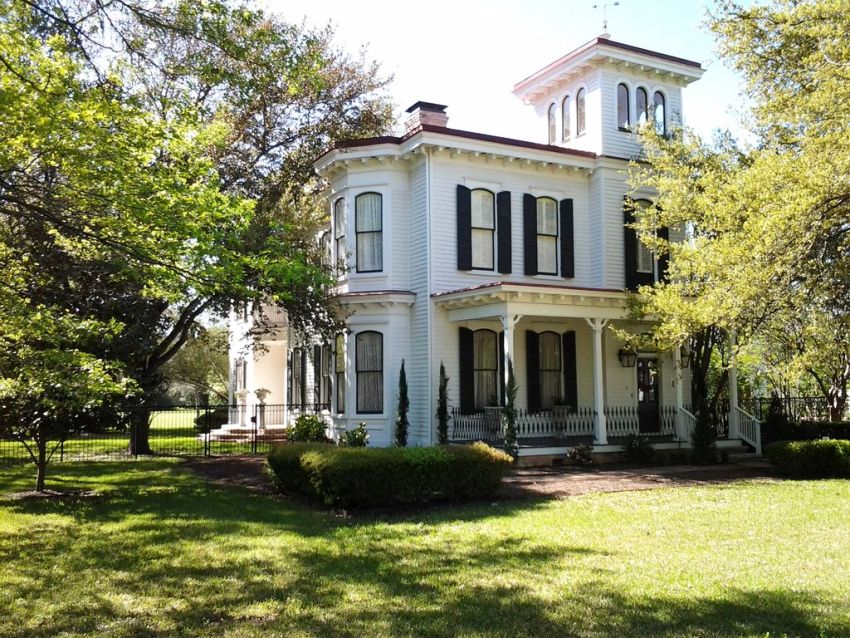
Victorian style in architecture is distinguished by a variety of types of decoration on the facade of one building
The main features that characterize Victorian architecture are:
- deep, but dull colors of the facade of the house;
- the use of almost all possible finishing materials;
- a variety of types of decoration on the facade of one building;
- large elongated main and small dormer windows;
- bay windows, turrets, balconies, verandas;
- complex roof structure: broken, multi-stage.
Useful advice! The architecture of the Victorian building is interesting, but quite complex. When ordering or designing such a model of a house, special attention must be paid to the heating system so that remote rooms do not remain cold.
Modern house designs in classic style
Not every potential buyer of a private building is trying to understand the peculiarities of the English architectural eras. He wants to buy or build a house in a classic style. In this case, managers of construction companies provide him with a huge choice.
For the expression of many architectural styles, there are limitations in the use of materials and building technologies. This is not typical for the English classics. The house can be laid out of natural stone, foam concrete, aerated concrete, cinder block, brick, etc. Ok can be framed with wood sheathing or made of timber. Only the forms matter.
Designing a classic home requires good taste and investment. The following generalized characteristics are characteristic of the English structure:
- steep roof;
- thick walls;
- high ceilings;
- solid foundation;
- the need to design each element of the facade of the building.
My home is my fortress, reliable, beautiful and comfortable. On the proposed photos - houses in a classic style. The buildings mainly have two floors, but one-story, one and a half tiers, three-story buildings are also offered. There are typical buildings, there are also many exclusive options. The facades of country houses impress with a variety of ideas. The price range of projects is quite wide - from 6 million rubles. for a house with an area of 120 m² in a discreet Georgian style up to 60 million rubles. for a 520 m² Victorian mansion.
Useful advice! When choosing a house in the English style, be sure to consider the size of the site as a whole. If less than 5 acres of land are allocated for construction, a solid classic-style house will be "cramped" here.
English architectural traditions in American-style homes
Even with a cursory examination of American-style house designs, one can note their great resemblance to English buildings. The United States as a state was formed on the site of the English colonies, so mutual influence on the development of architecture was inevitable.
With a slight shift in time relative to Britain, architectural styles have consistently emerged in America:
- colonial;
Related article:
Scandinavian-style house: smart minimalism for a comfortable stay
Timber houses, frame technology. Facade decoration. The interior of Scandinavian houses. Turnkey construction.
- tudor;
- Victorian.
The colonial style, which experienced a revival in the 19th century, is characterized by the symmetry of the facade elements, a massive porch with columns, windows divided into small square glazed fragments, and decorative details in the form of carvings.
The Tudor-style houses are reminiscent of those of medieval England. These are half-timbered structures with massive mansards, a high gable roof. For the design of modern facades of houses of this style, plaster of various shades, wooden elements, and natural stone are used.
The designs of the facades of houses of the Victorian era in America are distinguished by the presence of towers of various shapes, balconies, and bay windows. This American style borrowed many of the features of design elements from the French: color shades, the design of the columns, the basement.
Modern ways of facing the facades of houses in the English style
Along with the architectural features, the decoration of the facade of the house is important for expressing style. Photos on the Internet show various cladding options. It makes sense to dwell on the main methods of decorating building facades. This information can be especially useful for those who independently design their future structure.
The main materials used for decoration are:
- natural stone;
- brick;
- plaster;
- board, wooden front panels;
- siding.
Materials for the facade of the house can be used in various combinations: wood and brick, siding and plaster, facade wood panels and natural stone, etc. It should be borne in mind that a significant part of the walls should be flat. Decorative types of masonry of certain elements of the building, even when occupying a significant area, are designed to complement and decorate.
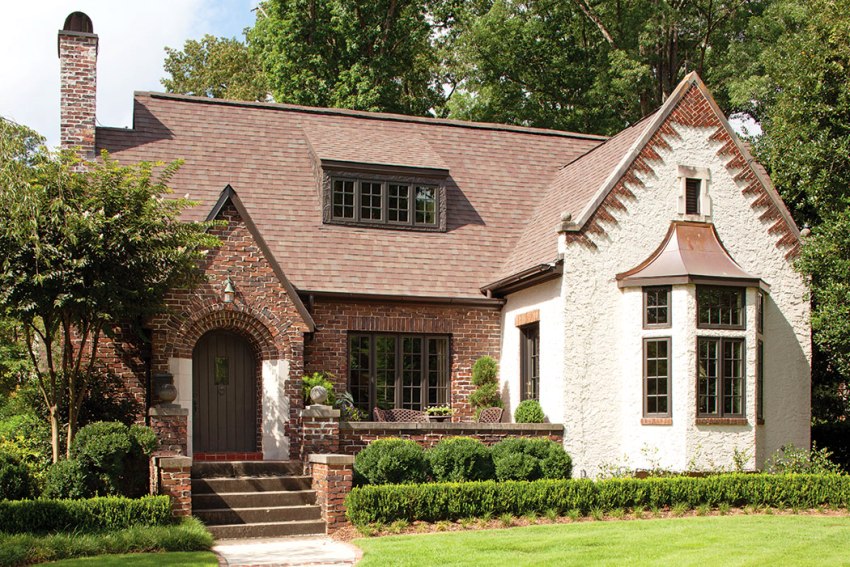
The main materials used for decorating houses in the English style are: natural stone, brick, plaster, wood
Cladding of facades of houses with stone is often used. This is a win-win option that adds solidity to the structure. When using this versatile material for finishing structural elements, remember that it does not go well with red brickwork and siding.
Are there differences in the design of the facades of one-story houses and the facades of two-story houses? From the point of view of the use of materials and execution technique, there is no difference. However, in order for a one-story building not to lose its restrained English grandeur, a number of recommendations must be followed:
- it is better to make decorative fragmentary wall cladding with a medium-sized stone, since a large one will visually expand, but at the same time reduce the real height of the house;
- it is desirable that the windows have two hinged leaves, consisting of one row of vertically arranged glazed square sections;
- it is not recommended to use siding for finishing one-story houses, since it is not worth combining on a small area, and full cladding with this material looks rustic for the facade of an English-style house.
When decorating the facades of two-story houses, there are no restrictions.The basic rule is to follow the rules of style.
Projects of one-story houses in the English style
One-story houses in the English style are quite a popular option, since they have a reasonable price. Modern architects are trying to give them all the features inherent in this architectural direction. Houses are built on a large foundation. This makes the building as a whole high and makes it possible to decorate the entrance in an interesting way, equipping a porch with columns, pilasters, high and wide steps and original railings. The inability to make a balcony is replaced by designing a veranda along one of the walls.
Quite often, one-story English houses are erected in a frame way. This somewhat reduces the cost of construction and makes it as environmentally friendly as possible.
To maintain the overall solid appearance of the building, special attention is paid to the roof. The viewing windows in its slopes serve not only as decoration, but also as a means of illuminating the attic area.
Photos of projects of one-story houses in the English style, proposed by various construction companies, demonstrate the possibilities of expanding the usable area of the house through the use of the basement (for technical needs) and attic (to accommodate the living room) floors. The elegance of the exterior contributes to a positive perception of buildings of this type.
Useful advice! When choosing a project for a one-story house in the English style, be sure to ask about the composition of the roofing pie. Moisture insulation and heat conservation are very important for this type of house.
Projects of modern cottages in the English style
If we are talking about a true English cottage, then it is necessary to imagine a low one-story building, covered with thatch, or material that imitates it. The house is practically buried in randomly planted flowers, bushes, climbing plants. The architecture is made in accordance with the style: symmetrical windows, chimneys, observation windows, etc.
Far enough from the above-described building is a modern English-style cottage. Striving to a certain extent for convenience, practicality, expediency has led to significant changes.
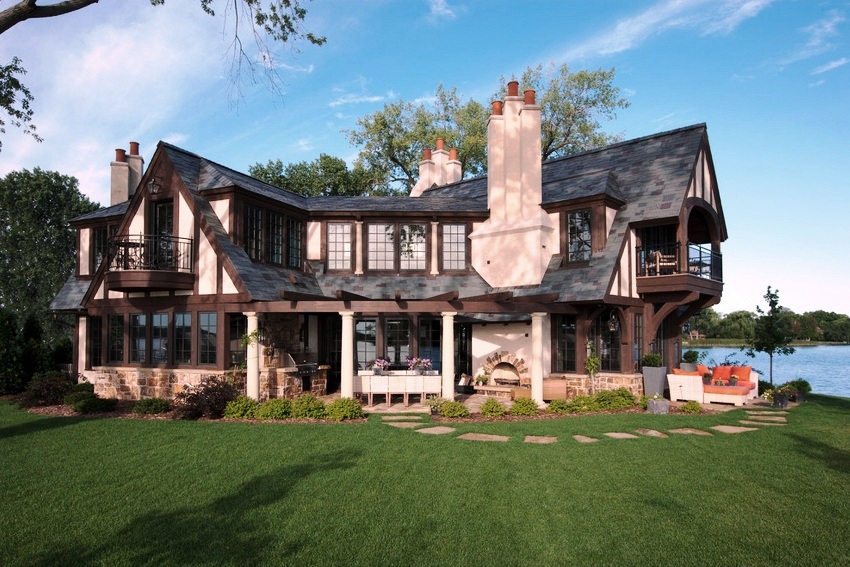
Distinctive features of modern English-style cottages are: the desire for compactness and the presence of at least two floors
Only country houses are considered to be cottages. Most often these are settlements where buildings are created according to standard designs. It is the flow of construction that makes this housing affordable, and therefore in demand. The main distinguishing features of modern English-style cottages are:
- striving for compactness;
- the presence of at least two floors;
- maximum use of the area of the basement tier.
The desire to place all premises under one roof requires rational planning. The small size of the land plots does not allow building complex houses. It is quite rare to find columns, pilasters in the architecture of the proposed cottage projects.
In the photo, the decoration of the facade of a private country house is made of bricks or various types of plaster. Brick walls are complemented by white cornices, moldings, arches. Plastered surfaces have pleasant color shades. The ground floor is lined with stone. Interesting are the options for cottages, where the decoration is made with panels of artificial stone - the buildings look solid, they breathe with historical romance.
English style in landscape design: naturalism and imitation of nature
English landscaping requires a significant amount of space. These should be landscapes with a pristine natural basis and embellished by human hand. However, few homeowners can have a lot of free space. The house plot is on average 4-7 acres.
Based on real conditions, a third of the local area should be allocated for a neatly mowed English lawn. This is the only design element that looks “right” in every respect. It acts as a background against which the rest of the plantings will seem to be elements of untouched wildlife.
The facades of brick houses are entwined with ivy, flower beds are chaotically scattered over the site, bushes adjacent to trees merge into a green oasis - these are the characteristic features of the design.
Useful advice! When arranging a personal plot, you should not remove irregularities in the form of hills, curved banks and slopes. English landscape design does not accept straight lines.
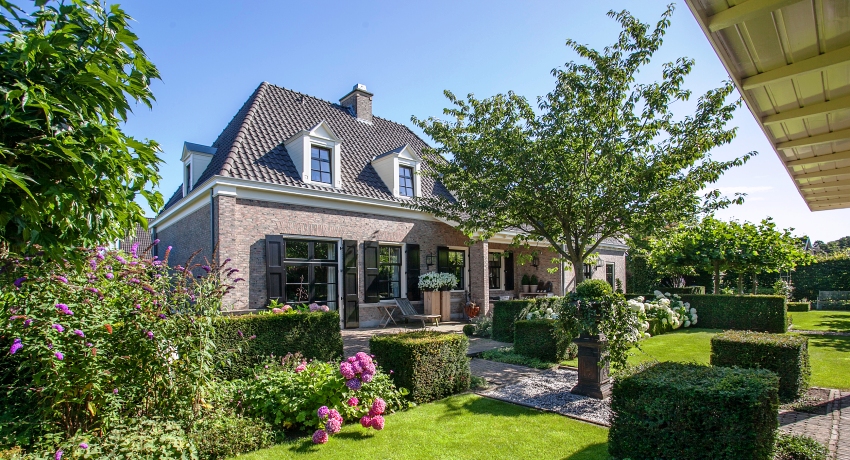
The facades of houses in the English style are most often entwined with ivy, flower beds with trees and shrubs are scattered throughout the site
Mixborders can be an excellent element of site decoration. These are constantly flowering flower beds, where plants are selected according to growing seasons and colors. This is not just a flower bed with many colors. Mixborders have no clear boundaries. Looking at them, one should get the impression that the flowers in this place have grown by themselves.
Photos of the facades of classical-style houses, immersed in greenery, benches with openwork metal backs, swings, gazebos entwined with ivy, bridges reflect the true content of English landscape design. The paths are paved with gravel, sandstone; in the depths of the garden, stones of a natural form form a composition with antique sculptures. An addition to the natural landscape is the basic rule that must be followed when decorating a site.
If there is at least a small pond in the local area, it must contain aquatic plants. It is imperative that everything in English landscape design be subordinate to the admiration of nature.
House in the English style: home should not be a burden
So that the house does not get tired over time, first of all you need to take care of it.
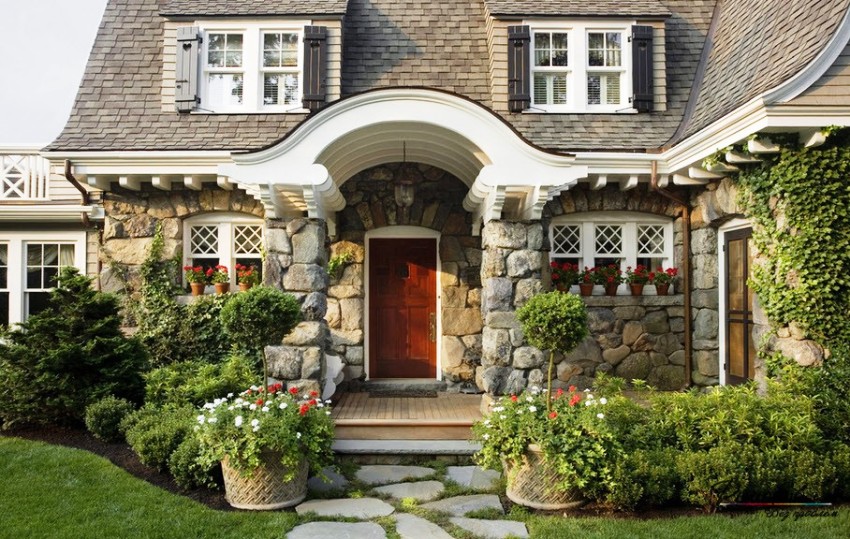
A lot of effort, time and physical costs will require the arrangement of the backyard of the house in the English style
However, there are some more points to consider before purchasing a classic English building:
- Even a small English house is an imposing structure. It is imperative to calculate your capabilities in order to keep it clean.
- A large number of structures and decorative elements on the facade of the building also require maintenance, cosmetic repairs or even renovation.
- Substantial funds will need to be allocated for heating and lighting. Austerity will lead to discomfort.
- A lot of time and physical costs will require the arrangement of the backyard territory.
- You should know that a classic house is a rather expensive pleasure.
The value of the classics lies in the inviolability of its canons of beauty and perfection. That is why the English style of architecture is not getting fewer fans. The solidity and grandeur of the house, which makes it possible to retire behind secure walls and temporarily detach from the outside world, fully devoting oneself to the family, is a feature of English buildings. When viewing pictures of country houses, the imagination involuntarily draws an unusual way of life, solemn and friendly receptions of guests, interesting traditions - an atmosphere of comfort, coziness, fullness of life.
